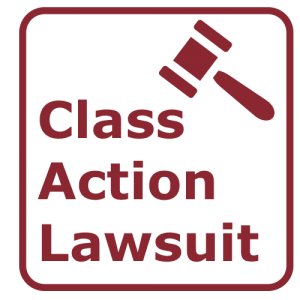Comprehending the Archer-Daniels-Midland Class Action Lawsuit: Trick Insights
Comprehending the Archer-Daniels-Midland Class Action Lawsuit: Trick Insights
Blog Article
Taking Lawful Activity: Insight Into Class Activity Suits
Course action lawsuits are a powerful device that enables individuals with comparable grievances to seek and join forces justice versus an usual defendant. These claims have actually gained substantial attention and have the potential to influence various individuals, making them a subject of rate of interest for several. Understanding the complexities of course action lawsuits is important for any person taking into consideration taking lawsuit, as it involves numerous aspects such as advantages, difficulties, and the actions involved in launching such a lawsuit. In this conversation, we will certainly discover the insight right into class action suits, dropping light on the elements that individuals must think about prior to joining one.
Understanding Class Action Lawsuits
Course activity claims are a legal device that allows a team of people with similar claims against an offender to jointly seek compensation or other legal remedies. Archer-Daniels-Midland class action lawsuit. When a large number of individuals have actually been affected by the same damage or misbehavior, this type of suit is generally made use of. Rather of each specific bringing a separate lawsuit, a course activity claim permits all influenced parties to settle their cases into a solitary lawsuit
One key benefit of class action legal actions is that they give access to justice for people that might not have the sources or expertise to pursue their insurance claims independently. By signing up with pressures with others who have similar grievances, complainants can merge their sources and raise their chances of success. Furthermore, course activity legal actions promote efficiency by streamlining the lawful process and avoiding several identical legal actions from blocking the courts.
To launch a class activity lawsuit, several individuals must act as class agents and file a grievance in behalf of the entire class. The court after that figures out whether the claim satisfies the requirements for course certification, including the following requirements: numerosity (an adequately big number of plaintiffs), commonness (usual concerns of legislation or reality), typicality (the insurance claims of the class reps are normal of the class), and competence of representation (the course agents will properly represent the rate of interests of the class) It will inform potential course participants who can then pick to get involved or opt-out. if the court certifies the course.
Advantages of Going After a Class Action Legal Action
Going after a course action legal action offers individuals the opportunity to jointly seek compensation or lawful remedies for shared complaints against an accused. This kind of lawful activity gives several benefits to plaintiffs, making it an eye-catching option in certain situations.
Among the key benefits of seeking a course activity suit is the capability to pool sources and share the expenses connected with litigation. Legal proceedings can be costly, involving fees for attorneys, professional witnesses, and court-related expenses. By joining forces with various other people who have comparable claims, complainants can share these costs and decrease the financial burden on each person.
Furthermore, course activity claims promote efficiency in the lawful system. Rather than multiple people filing different claims versus the same defendant, a course activity legal action consolidates these claims into one case. This not just conserves time and sources for the court yet likewise enhances the process for the complainants.
Moreover, class activity legal actions give a system for individuals to have their voices listened to. By signing up with with each other, complainants can magnify their complaints and boost the probability of accomplishing a positive end result. Future FinTech class action lawsuit. This collective stamina can likewise tax offenders to address the underlying problems and make needed adjustments to avoid comparable injury in the future
Challenges in Class Activity Litigation
One of the key factors to consider in class activity lawsuits is the intricacy of managing a huge team of plaintiffs with varied passions and circumstances. This provides a number of difficulties that can make the process extra taxing and challenging. One obstacle is the trouble of obtaining and presenting proof that supports the cases of all the plaintiffs. Each individual plaintiff might have various proof to support their situation, and it can be challenging to provide this proof and collect in a cohesive and influential fashion.
An additional challenge is the potential for disputes of rate of interest amongst the complainants. Course action legal actions often include a multitude of people that might have different objectives and priorities. Some plaintiffs may be mostly thinking about obtaining financial payment, while others might be extra focused on achieving a change in corporate habits or getting injunctive alleviation. Stabilizing these diverse rate of interests can be a considerable challenge for attorneys standing for the class.
Furthermore, there might be difficulties in regards to determining the proper quantity of damages to be awarded. In course action lawsuits, damages are generally awarded based on the average injury experienced by the entire course. However, computing this ordinary damage can be intricate, as it calls for establishing the level of damage suffered by each individual plaintiff and aggregating these damages.
Actions to Launch a Course Action Lawsuit
To initiate a course action lawsuit, the initial step is to determine a valid lawful claim that influences a group of people that have suffered comparable damage or injury. This claim has to be based on a violation of a lawful duty, such as oversight, scams, or violation of agreement. As soon as the insurance claim has actually been recognized, the following action is to gather evidence to sustain the claim. This might involve gathering documents, carrying out interviews, and consulting professionals in the relevant field.
After collecting the necessary evidence, the following action is to find a representative complainant, likewise called the course agent, that will act upon part of the entire class. The class rep ought to have a solid claim and be prepared to birth the duty of representing the rate of interests of the whole course.
As soon as the representative plaintiff has been identified, the next step is to file a complaint with the court. The problem needs to consist of a detailed description of the claims, the harm suffered by the class members, and the relief sought. It is very important to follow all step-by-step demands and due dates set by the court.
After the grievance has been filed, the court will review it and identify whether the instance can continue as a course action. The court will think about elements such as the size of the class, the usual lawful problems, and the competence of the representative complainant. If the court approves the course activity, it will notify the course participants and enable them to opt-out if they desire to pursue their very own private insurance claims.
Elements to Think About Before Joining a Course Activity Claim
Prior to making a decision to join a class activity suit, people must thoroughly evaluate numerous elements to identify if it is the right training course of action for them. While course action legal actions can supply an opportunity for people to seek justice and compensation for injury triggered by a typical entity or product, there are particular considerations that need to be taken right into account.
One factor to take into consideration is the stamina of the case. If there is sufficient evidence to sustain the insurance claims being made, it is important to examine the merits of the claim and determine. This includes evaluating the legal debates, gathering pertinent facts, and seeking advice from with legal experts to determine the chances of success.
One more important element is the possible recovery. If the claim is effective, people should evaluate the potential financial compensation they might receive. This can include approximating the problems endured and taking into consideration the costs and time entailed in pursuing the lawsuit.
Furthermore, people need to think about the possible threats and downsides of joining a class action lawsuit. This can include the possibility of a lengthy legal process, the uncertainty of the result, and the capacity for restricted control over the process.
Last but not least, people must additionally review their individual conditions and top priorities. Variables such as funds, time dedication, and psychological toll must be taken right into account prior to determining to sign up with a course activity claim.

Conclusion
Finally, course activity legal actions give individuals with the opportunity to seek justice and settlement for damage triggered by an usual offender. While they supply advantages such as performance and cost-effectiveness, obstacles such as complex lawsuits treatments and prospective disputes of rate of interest need to be thought about. Before joining a class action lawsuit, people should meticulously evaluate the elements and speak with lawyers to make an informed choice.

In course action lawsuits, problems are usually awarded based on the average injury endured by the entire class (Future FinTech class action lawsuit). If the court approves the class activity, it will alert the class participants and allow them to opt-out if they wish to seek their own private claims
Report this page